A fan controller that combines aesthetics and functionality, the FC10 offers up to 30 watts per channel (with a total of 4 channels). It also features a remote control (for controlling the display), and the special edition has interchangeable faceplates. It fits into a single 5.25″ drive bay. The retail price is $69.99.
The product ships with a box that includes an instruction manual, 4 temperature sensors, 4 sleeved 3-pin extensions, 1 jumper, 4 screws, the remote control, and the fan controller itself. The cables are fully-braided, and should be more durable overall.
The remote control has 7 buttons: an “Open” button, a “Close” button, a “M” button, a “<<” button, a “>>” button, and a “+” and “-” button. Open and Close are to turn the display on and off, while the “M” button stands for mode and is used to switch between display modes: temperature, voltage, and RPM. The double arrows (“<<” and “>>”) are for channel selection, and the “+” and “-” buttons are for increasing and decreasing the voltage in 1 volt increments/decrements. Unfortunately, the only way of controlling the fans is through the remote control, so if the remote control battery dies, there is no way of controlling the fans until you get a new battery. Also if you lose the remote control, you are out of luck. In addition, the remote itself is somewhat thin and flimsy feeling.
The display uses real Nixie tubes: glass tubes filled with gas that give off an orange glow when current passes through them. These tubes were primarily used for scientific equipment between the 1950s and early 1970s, and give the controller a distinctly retro feel. Under each Nixie tube is an LED that indicates which fan/probe is under control/monitoring. There are also three LEDs indicating which is being displayed: temperature, voltage, and RPM.
The back of the controller has all the different connectors on a PCB (there are two PCBs: one for the connectors, and the other for the Nixie tubes). In the top left corner, there are 8-pin connectors for the four temperature probes (PT1-PT4). On the right is a 3-pin connector with a jumper that allows the user to select the temperature unit (Fahrenheit or Celsius). Next to it is the remote received with a wired antenna. Under it is a 2-pin connector with a jumper to enable or disable the speaker. At the bottom right is the 4-pin Molex connector. The rest of the bottom of the first circuit board had the four 3-pin fan connectors.
The controller itself is reliable; the input and output voltages no not fluctuate by much, even when multiple fans are connected to it, and the temperature sensors are quite accurate.
The FC10 is somewhat pricey (list price is $69.99, but often sells for more), and the fact that it can only be operated via remote control will be a deal-breaker for some. Still, it is certainly a unique, stylish product, and those who like the look of the Nixie tubes might consider this controller.
Lamptron FC10 Specifications:
Dimension: 148.5mm x 42.5mm x 75mm (5.25″ Bay)
Power Output: Up to 30 watts per channel
Control Channel: 4 Channels
Panel Color Available: Brass, Black, White, Black Bench Drawing Metal, Black w/ Brass Trim
DC Input: 3 X +12v (Standard 4 Pin Molex)
DC Output: 0V-12V DC
Fan Connectors: 4 X 3-pin connectors
Recommend PSU wattage: 400w or higher
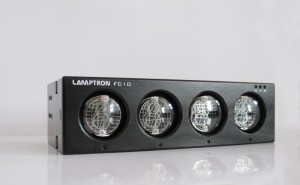
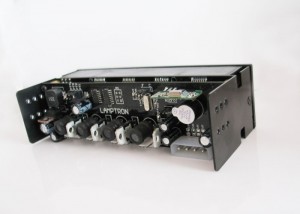
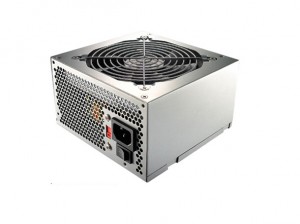
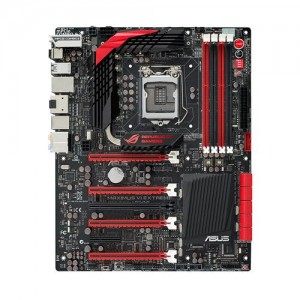
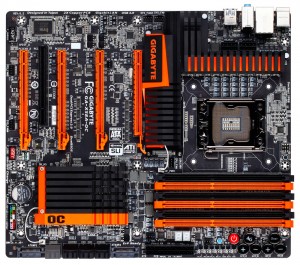
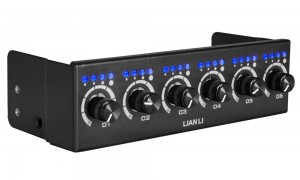
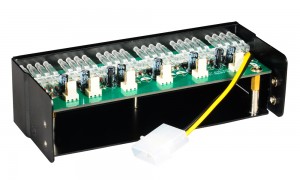
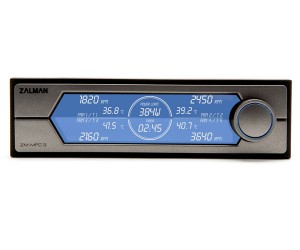

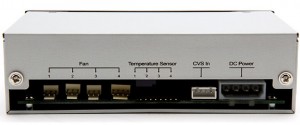
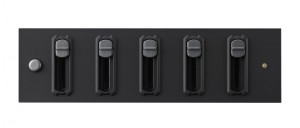
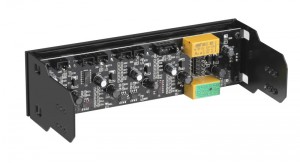
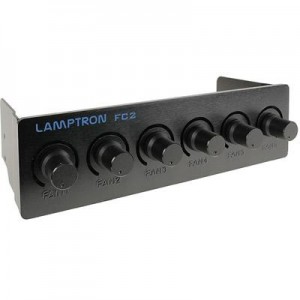
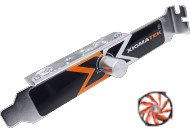
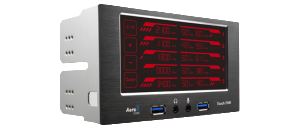
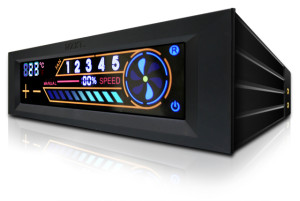
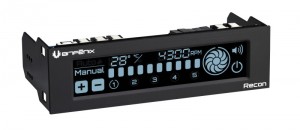
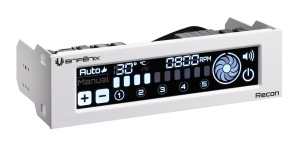
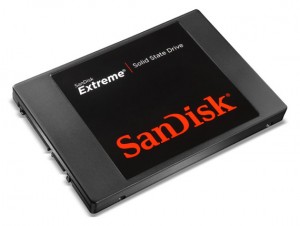
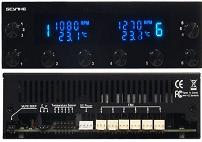
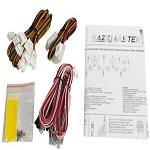
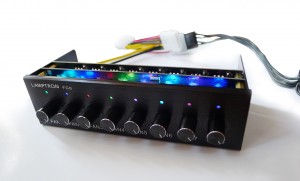
Recent Comments